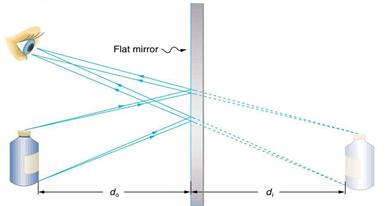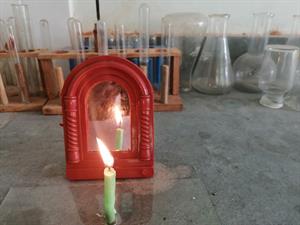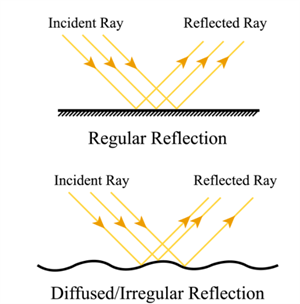PDF chapter test TRY NOW
Formation of the image by a plane mirror:
- When the object's light rays strike the mirror, the object's image is formed inside the mirror.
The incident rays from the object are reflected by the mirror and reach our eyes, allowing us to see the object's image clearly and determining that the rays are coming from the mirror.

Reflection of light rays
Characteristics of the image formed by a plane mirror:
- The plane mirror's image is the same height as the object it reflects.
- The distance between the image and the mirror, as well as the distance between the object and the mirror, is always the same.
- The plane mirror's image is erect or upright, and laterally inverted because it is formed by the apparent intersection of diverging rays; it is a virtual image.
Important!
In the case of a plane mirror, the distance between the object and the image is always the same.

Lateral inversion image of a candle
Lateral inversion:
Lateral inversion occurs when the left side of an object appears on the right side of the image and vice versa when an image is formed in a mirror.

Lateral inversion
Types of reflection:
Depending on the surface on which light hits, the reflection is classified into two types:
- Regular reflection
- Diffused reflection
Regular reflection:
When parallel rays of light strike a smooth surface, only parallel rays are reflected. This is referred to as "regular reflection." It is also called specular reflection.
Diffused reflection:
When parallel light rays strike an irregular or rough surface, they are reflected in all directions or at various angles. It is also called irregular reflection.

Types of reflection
Multiple reflection:
- This is a special case of reflection.
- In this type of reflection, the light is reflected back and forth several times between reflecting surfaces.
- If a reflected light ray is reflected again on being incident on another surface, it is termed multiple reflections.
- Thus it forms multiple images of a single object.

Multiple images of a single object
